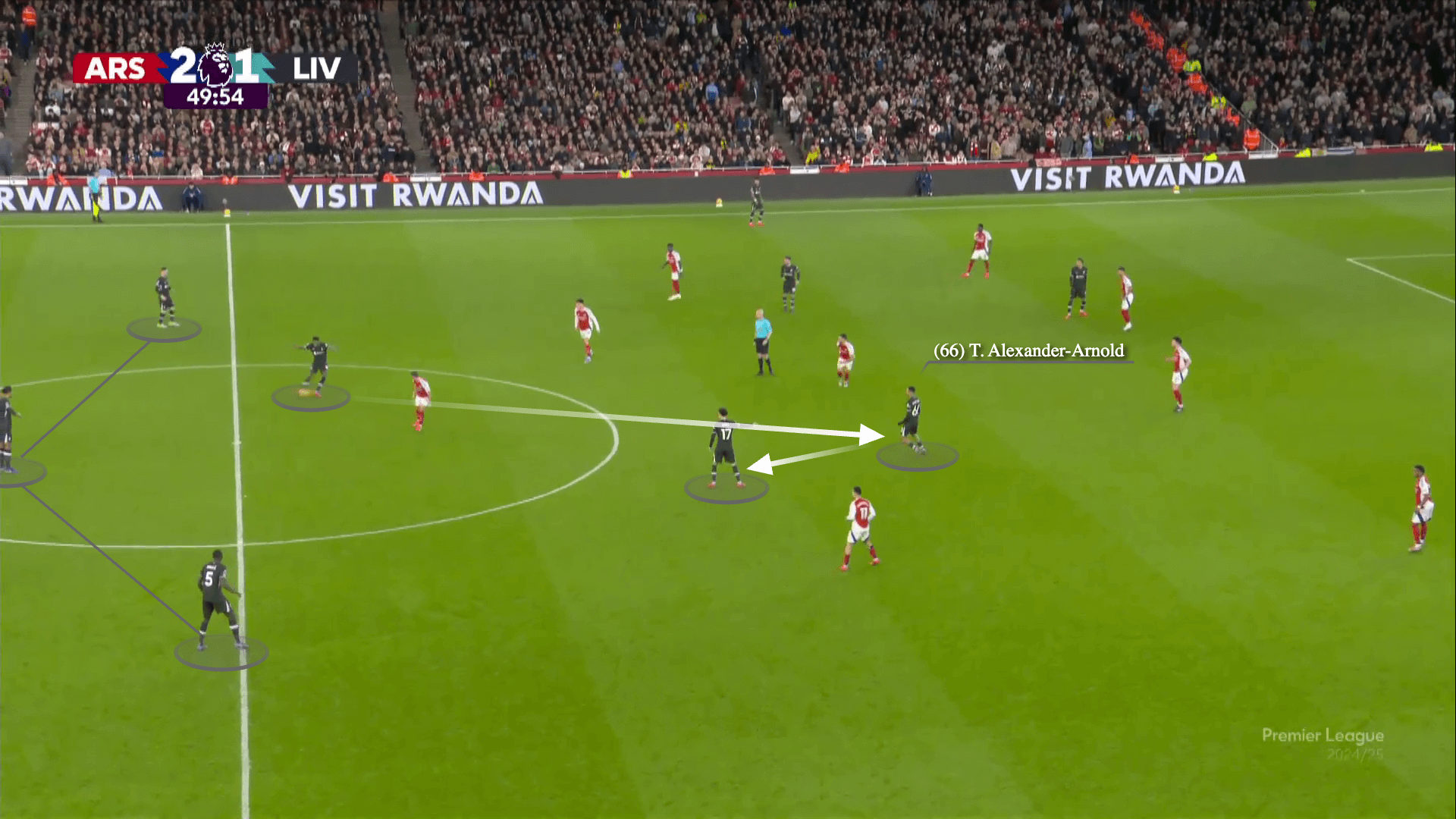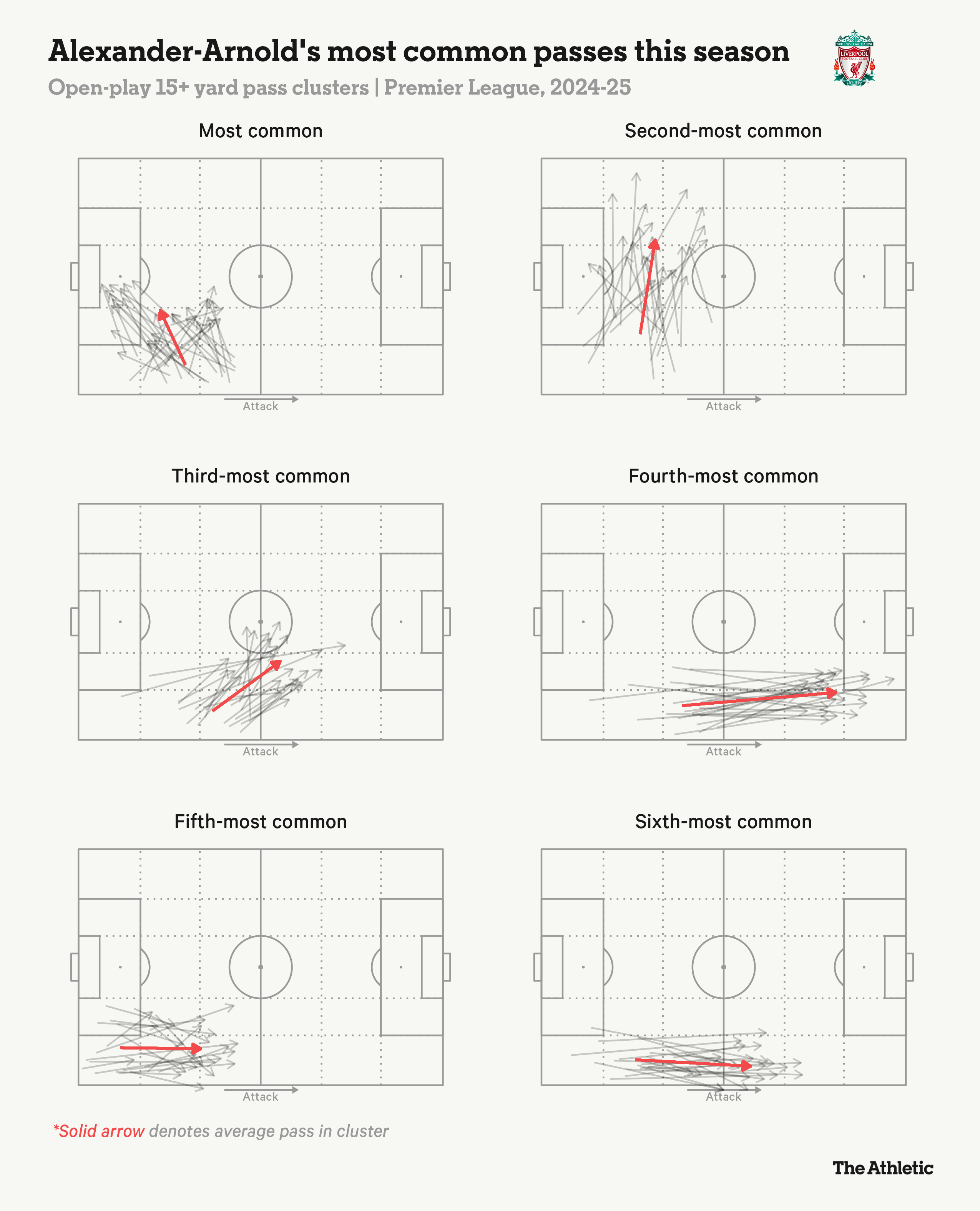There has been little reason to doubt Arne Slot’s tactical decisions since he arrived in the summer.
Liverpool’s new manager has openly acknowledged that his playing style is not worlds apart from his predecessor, Jurgen Klopp, which has made the transition from one to the other far smoother. Yet, some interesting wrinkles have not gone unnoticed.
One notable tweak is Trent Alexander-Arnold’s return to a traditional right-back role — by his own standards — having occupied more central spaces in Liverpool’s build-up during Klopp’s final season. While Alexander-Arnold’s role sparked debate early in Slot’s tenure, it quickly became evident that the Dutchman’s emphasis was firmly on the collective, not the individual.
“I think a position for players is always related to the team,” Slot said in August. “It’s also my aim to bring the best out of the player, but the first aim is to bring the best out of the team. Trent is known for playing as a right full-back, for all his (senior professional) life I think, and when he was a youngster he played in midfield.
“In the modern game, you see a lot of full-backs going into the midfield, that is what he did last season once in a while, and I saw him playing at the Euros in midfield. He’s capable of playing both positions really good, and then it’s up to me where I think he could help the team the most.”
As the graphic below shows, Alexander-Arnold has not exclusively hugged the touchline from right-back in 2024-25. But there is a notably lower share of touches in the central channel of the pitch compared to 2023-24.

Perhaps Slot was deterred by the fact things did not go to plan for England in “operation get-Trent-into-midfield” during last summer’s European Championship. There are now fewer occasions of Alexander-Arnold drifting into midfield to form a double pivot alongside an accompanying team-mate when Liverpool build out from the back — compared to how it often worked last season, as shown below.

Neither have we seen the 26-year-old dropping between the centre-backs to dictate proceedings from a deeper position with the whole field ahead of him, as shown against Fulham in 2023-24.

To be clear, Alexander-Arnold does still have the license to drift inside when the opportunity arises under Slot.
This might be to provide passing angles that help Liverpool work the ball through an opposition press…

…. or to offer himself as a passing option during the progression phase — in this case helping with a third-man passing combination when Arsenal are blocking ball progression into Liverpool’s midfielders.

Generally speaking, Liverpool are more likely to keep a narrow shape in their build-up this season, with Andy Robertson tucking inside to form a back three.
Alexander-Arnold’s position is interesting during this phase — he is likely to drift into a more advanced position to form something of an L-shape in the back line.

This has been a common sight this season, with Alexander-Arnold operating on a different line to provide a passing angle — between the defence and midfield to help with quicker circulation — which helps Liverpool progress the ball through the thirds.

This tactical tweak is not by chance. The locations that Alexander-Arnold takes up have been clearly choreographed with his new manager.
“I’d say positioning-wise, he (Slot) has explained how positioning is so important in football and where you are (on the pitch) — even when the ball is on the other side,” Alexander-Arnold said in a recent interview with Sky Sports.
“That changes throughout games and for each game depending on how the opposition are set up, and that is something I like — I like to be challenged.”
In terms of his on-ball actions, Alexander-Arnold is notably less involved this season, averaging just 53 passes per 90 minutes. That’s a significant reduction from his previous six campaigns.
Rather than being the chief playmaker like he was last season, Liverpool’s build-up is now commonly channelled through the centre of the field — with a rejuvenated Ryan Gravenberch more likely to receive the ball from his centre-backs before driving forward to look for those ahead of him.

What is also striking about the table above is that Alexander-Arnold engages in far fewer crosses and switches of play under Slot.
With his undoubted technical brilliance, it has been a common sight to see Liverpool’s right-back effortlessly ping a diagonal to the opposite flank and disrupt the other team’s structure by shifting them side-to-side.
That has not totally vanished from his game — with 1.6 switches per 100 passes this season — but Slot’s style of play is predicated on greater control in the build-up phase, meaning there is less requirement for Alexander-Arnold to play those searching cross-field balls.
While Klopp’s teams thrived in the transitional phases that these riskier passes could bring, Slot is instilling a more calculated approach.
Alexander-Arnold is still attempting to rake balls forward, with 20 per cent of his passes being long balls (passes of 35-plus yards) — the highest rate in recent seasons. However, those passes appear to be qualitatively different.
Using a cluster analysis (which groups similar pass types together based on their start and end points on the pitch), we can look at Alexander-Arnold’s passing style under Slot compared with last season.
Honing in on passes of 15-plus yards in length, you can see that his most common pass type in 2023-24 was his archetypal cross played into the penalty area. Three of his six most common pass clusters see his starting position in the opposition half — often servicing those ahead of him.

Even with the caveat that we are less than halfway through the campaign, there appears to be a subtle difference in Alexander-Arnold’s passing profile this season.
Given his lower cross volume, last season’s most common crossing pass cluster has been bumped down the list, with Liverpool’s No 66 more likely to engage in sideways or backwards passes as part of his distribution diet.
Notably, all six of this season’s most common pass clusters start in his own half, often circulating the ball across the back line (first and second-most common) or into central midfield areas (third-most common).

Alexander-Arnold’s trademark passes down the line remain a prominent part of his game, frequently finding a midfielder pulling wide — often Curtis Jones or Dominik Szoboszlai — or delivering a searching ball for the tireless Mohamed Salah. However, his play does appear to carry a greater sense of caution, which is indicative of how Slot wants his team to play.
“(Last season) they used every moment they could to play in behind or deep,” Slot said of Liverpool’s 2023-24 side in an interview with Sky Sports at the start of the season.
“That meant that the game was sometimes open, so I told them to get a better judgment in risk and reward. If you can put someone through in front of the goalkeeper, please try to do so. If not, sometimes it’s a good idea to keep the ball.”
Greater discipline on the ball has seen Liverpool employ a more compact defensive shape without it, with Alexander-Arnold seemingly far less vulnerable when defending the right flank.
Those tweaks to his positioning have been key to the team’s success. While his role hasn’t drastically changed, some subtle adjustments to Alexander-Arnold’s game have made a noticeable impact on Liverpool under their new manager.
(Nikki Dyer – LFC/Liverpool FC via Getty Images)





